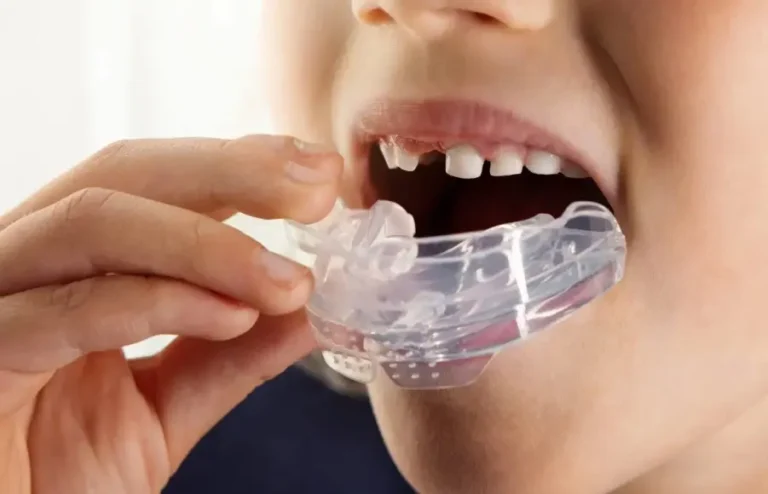A child’s jaw development plays a crucial role in their overall health, impacting dental health, speech, breathing, and appearance. Early understanding and intervention can prevent issues and lead to lifelong benefits. This post explores why jaw development matters, signs of potential problems, and how timely action can make a difference.
The Role of Jaw Development in Early Childhood
The human jaw is not just a bone for chewing food; it’s a structural anchor that shapes the entire lower face, supports the airway, and helps determine patterns of speech and function. From infancy through the early school years, both the upper (maxilla) and lower (mandible) jaws undergo rapid growth and adaptation.
During this time, the jaw expands to accommodate new teeth, allow proper tongue movement, and adjust to changes in breathing and swallowing. Well-developed jaws provide:
- Space for all permanent teeth, reducing the risk of crowding and misalignment
- A balanced facial profile that supports healthy aesthetics and function
- A stable airway, enabling proper nasal breathing and lowering the risk of sleep-disordered breathing
- Clear speech development as tongue position and movement improve
When development goes smoothly, these factors work together to set the stage for optimal health well into adulthood.
Factors Influencing Jaw Growth
Various elements play a role in shaping the growth trajectory of a child’s jaws:
- Genetics: Just like height or eye color, jaw shape and size often run in families. However, genes are not the only influence.
- Breathing habits: Children who breathe through their mouths (often because of allergies or enlarged adenoids) are more likely to develop narrow, misaligned jaws.
- Feeding behaviors: Breastfeeding encourages proper tongue movements and jaw growth, while long-term bottle feeding or thumb sucking may have the opposite effect.
- Tongue posture: A tongue that rests at the top of the mouth helps widen the upper jaw, while a low tongue posture can restrict growth.
- Nutrition: Jawbones need nutrients just like other bones; calcium, vitamin D, and a healthy diet contribute to robust development.
Recognizing Early Signs of Jaw Growth Problems
Spotting jaw development challenges early enables timely and effective intervention. Here are some signs to watch for in children:
- Crowded baby or permanent teeth
- Prolonged thumb-sucking or use of pacifiers past age 3
- Frequent mouth breathing or snoring
- Chronic nasal congestion without illness
- Difficulty chewing or swallowing food
- Speech challenges (such as lisping or unclear speech)
- An overbite, underbite, or crossbite becoming visible
- Jaw pain or asymmetry in the face
If any of these appear or persist, it’s important to consult a pediatric dentist or orthodontist for assessment.
The Benefits of Early Intervention
Traditionally, orthodontic treatment is associated with teens wearing braces. However, some jaw growth challenges are best resolved in early childhood before the jawbones harden and growth slows. Techniques like indirect bonding orthodontics can streamline and improve treatment efficiency during these crucial growth stages.
Early intervention doesn’t always mean braces. Today, many minimally invasive techniques focus on guiding jaw development rather than just correcting teeth after they’ve shifted. Some approaches include:
- Myofunctional therapy: Exercises that retrain mouth and tongue posture, breathing, and chewing functions
- Orthodontic appliances: Small devices (sometimes called expanders) gently guide jaw bones to widen or align while the child is still growing
- Habit-breaking tools: Devices that discourage thumb-sucking or promote nasal breathing
- Parental guidance: Education on nutrition, encouraging healthy oral habits, and addressing allergies or chronic congestion
By intervening early:
- The jaws can be guided to their optimal growth trajectory
- More invasive or prolonged dental interventions can often be avoided later
- Facial symmetry and airway function are supported during crucial growth years
- Children’s overall confidence and comfort (with speaking, eating, and sleeping) improve
Supporting Healthy Jaw Growth at Home
Parents and caregivers play a key role in promoting healthy jaw development. Here are simple steps you can take:
- Promote nasal breathing: Address allergies, keep bedrooms allergen-free, and seek medical advice if persistent mouth breathing occurs
- Encourage proper chewing: Offer a diet with healthy, textured foods that require chewing to stimulate jaw muscle growth
- Discourage prolonged oral habits: Gently help kids move away from thumb-sucking and pacifiers beyond age 3
- Model good posture: Encourage your child to keep their lips closed and tongue resting on the roof of the mouth when not speaking or eating
- Stay proactive with dental visits: Schedule regular check-ups with a pediatric dentist who understands jaw development
When to Seek Professional Help
If you’re unsure whether your child’s jaw is developing optimally, trust your instincts and reach out to a professional. Pediatric dentists, orthodontists, and sometimes speech therapists or ENTs can diagnose and craft a personalized plan to foster healthy jaw growth.
Early referrals help ensure children receive the gentle, effective treatments available today, setting them up for a lifetime of confident smiles and optimal function.
Conclusion
Early jaw development impacts more than straight teeth—it supports chewing, breathing, speaking, and overall confidence. Parents and caregivers can promote healthy growth by encouraging good habits and seeking early guidance. Modern interventions are now more effective and child-friendly than ever.
Also Read-Understanding the Arbitration Process in Healthcare Payment Disputes
